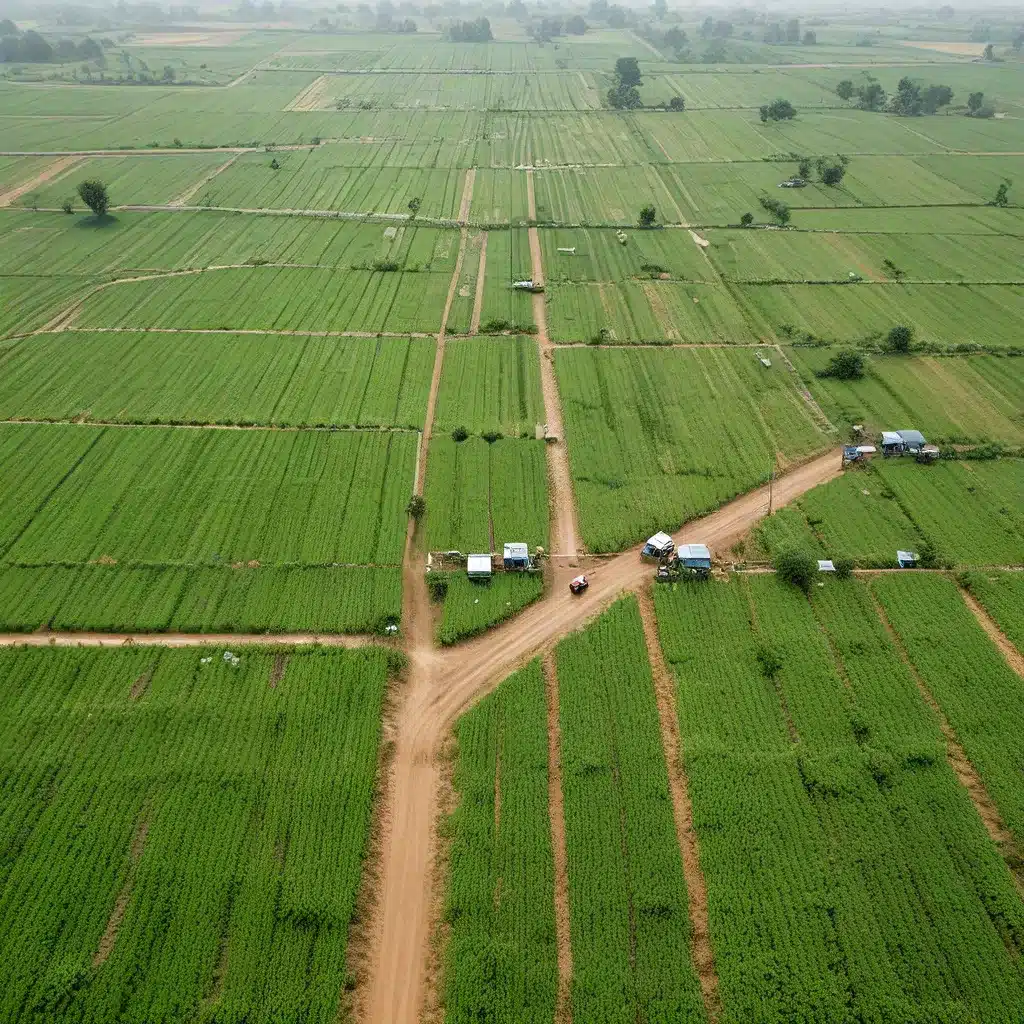
The Rise of Sensor Networks in Precision Agriculture
Sensor networks have emerged as a transformative technology in the field of precision agriculture, enabling farmers and agricultural researchers to monitor and optimize microclimate conditions with unprecedented accuracy and granularity. By deploying a network of interconnected sensors across agricultural landscapes, stakeholders can now collect real-time data on critical environmental factors, such as temperature, humidity, soil moisture, wind patterns, and solar radiation.
This data-driven approach to microclimate monitoring represents a significant departure from traditional agricultural practices, which often relied on generalized weather forecasts or manual observations. Sensor networks allow for the precise tracking of localized environmental conditions, empowering farmers to make more informed decisions regarding irrigation, pest management, crop selection, and harvesting schedules.
Enhancing Agricultural Yields and Resilience
By leveraging the insights gleaned from sensor network data, farmers can implement precision agriculture techniques to optimize crop yields and enhance the overall resilience of their operations. For instance, the ability to monitor soil moisture levels can inform irrigation strategies, ensuring that water resources are used efficiently and crops receive the appropriate amount of moisture throughout their growth cycle.
Similarly, the real-time tracking of temperature and humidity fluctuations can help farmers anticipate and mitigate the impact of extreme weather events, such as heat waves or frost on their crops. This knowledge empowers them to take proactive measures, such as adjusting planting schedules, deploying shade structures, or implementing frost protection systems, thereby minimizing yield losses and improving crop quality.
Optimizing Resource Utilization and Sustainability
Sensor networks in precision agriculture also play a crucial role in optimizing resource utilization and promoting sustainability. By closely monitoring soil nutrient levels, water consumption, and energy usage, farmers can make more informed decisions regarding the application of fertilizers, irrigation schedules, and energy-efficient practices.
This data-driven approach helps reduce wastage, minimize environmental impact, and enhance the overall sustainability of agricultural operations. For example, precise fertilizer application based on soil nutrient data can prevent over-application and minimize the risk of groundwater contamination. Similarly, optimized irrigation schedules driven by soil moisture and weather data can lead to significant water savings and decreased energy consumption for pumping and distribution.
Challenges and Considerations in Sensor Network Design
While the benefits of sensor networks in precision agriculture are well-established, the design and implementation of these systems are not without their challenges. Network connectivity, sensor reliability, data management, and energy efficiency are critical factors that must be carefully considered.
Ensuring reliable connectivity across vast agricultural landscapes can be a significant obstacle, particularly in remote or rural areas with limited infrastructure. Mesh networking, long-range wireless protocols, and satellite-based solutions are some of the approaches employed to overcome these connectivity challenges.
Sensor reliability is another crucial aspect, as environmental conditions and physical stresses can impact the accuracy and longevity of sensor hardware. Sensor redundancy, calibration protocols, and advanced diagnostics are essential for maintaining the integrity of the sensor network data.
Moreover, the sheer volume of data generated by sensor networks introduces challenges in storage, processing, and analysis. Cloud-based platforms, edge computing, and data aggregation techniques are being leveraged to address these data management concerns and enable real-time decision-making.
Energy Management in Sensor Networks
One of the key considerations in sensor network design for precision agriculture is energy management. Sensors and communication modules within the network can be power-hungry, particularly in remote or off-grid locations where access to grid electricity may be limited.
Energy-efficient hardware, low-power communication protocols, and innovative power management strategies are crucial for ensuring the longevity and sustainability of sensor network deployments. Solar-powered sensor nodes, energy harvesting techniques, and sleep/wake cycling mechanisms can help minimize energy consumption and extend the operational lifespan of the sensor network.
The Future of Sensor Networks in Precision Agriculture
As sensor network technologies continue to evolve, their role in precision agriculture is poised to become even more pivotal. Advancements in sensor miniaturization, wireless connectivity, data analytics, and machine learning will drive further refinements in microclimate monitoring and decision support systems.
The integration of sensor networks with autonomous systems, such as drones, robots, and self-driving tractors, will enable real-time, adaptive responses to changing environmental conditions. Predictive models based on historical sensor data and weather forecasts will help anticipate and mitigate the impact of extreme weather events on crop production.
Moreover, the synergistic combination of sensor networks, IoT, and big data analytics will unlock new opportunities for precision farming, supply chain optimization, and agricultural sustainability. As the sensor network ecosystem continues to evolve, it will undoubtedly play a pivotal role in shaping the future of global food production and environmental stewardship.